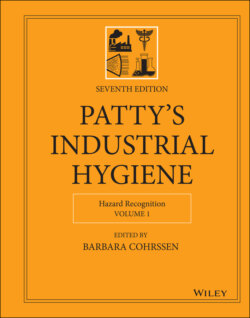Читать книгу Patty's Industrial Hygiene, Hazard Recognition - Группа авторов - Страница 110
2.4 Occupational Physician
ОглавлениеAlthough these three professions make up the heart of the EHS professions, there are other professions that deserve mentioning as they also face unique as well as common risk communication challenges. From a global perspective, it is the occupational physician (OP) profession that often leads health and safety offices as well as more holistic EHS models. It is often an outcome of national regulatory language that the OP manages the other professions. These can be the same regulations that do not directly include the IH profession in their language, directly hampering the necessary growth of the profession in these countries. This structure is also a by‐product of health‐oriented systems, with the EU as a prime example, that are developed by design within larger corporate structures or are derived as independent offices that are contracted to multiple manufacturing or industrial operations regionally. When it comes to risk communication, the OP has a distinct advantage of working directly with employees that are more likely than not to be an active participant in discussions of potential work‐related health discussions as they have a strongly vested interest their own well‐being and the risks that may compromise their health or safety. OPs also have a major potential disadvantage in that it is more onerous, if not outright unlikely, to inject prevention into their communication with patients as the topic of work‐related risks is often a by‐product of the discovery of existing illness or injuries. Ergonomists often face a similar hurdle in the discussions or work‐related risks as they are often called in to perform an assessment after pain, injury, or musculoskeletal diseases have already occurred. It takes a persuasive risk communication for ergonomists to inject themselves in a preventative manner. The leverage toward controlling and reducing physical exposures is often in balance with the economic disincentive, familiar to corporate board rooms and well known to seasoned EHS professionals, of the potentially high costs often associated with intervention outcomes in the absence of injury and illness. Risk communication strategies must overcome these barriers at all levels.
